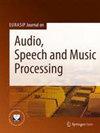DeepDet: YAMNet with BottleNeck Attention Module (BAM) for TTS synthesis detection
IF 1.9
3区 计算机科学
Q2 ACOUSTICS
Eurasip Journal on Audio Speech and Music Processing
Pub Date : 2024-04-01
DOI:10.1186/s13636-024-00335-9
引用次数: 0
Abstract
Spoofed speeches are becoming a big threat to society due to advancements in artificial intelligence techniques. Therefore, there must be an automated spoofing detector that can be integrated into automatic speaker verification (ASV) systems. In this study, we recommend a novel and robust model, named DeepDet, based on deep-layered architecture, to categorize speech into two classes: spoofed and bonafide. DeepDet is an improved model based on Yet Another Mobile Network (YAMNet) employing a customized MobileNet combined with a bottleneck attention module (BAM). First, we convert audio into mel-spectrograms that consist of time–frequency representations on mel-scale. Second, we trained our deep layered model using the extracted mel-spectrograms on a Logical Access (LA) set, including synthesized speeches and voice conversions of the ASVspoof-2019 dataset. In the end, we classified the audios, utilizing our trained binary classifier. More precisely, we utilized the power of layered architecture and guided attention that can discern the spoofed speech from bonafide samples. Our proposed improved model employs depth-wise linearly separate convolutions, which makes our model lighter weight than existing techniques. Furthermore, we implemented extensive experiments to assess the performance of the suggested model using the ASVspoof 2019 corpus. We attained an equal error rate (EER) of 0.042% on Logical Access (LA), whereas 0.43% on Physical Access (PA) attacks. Therefore, the performance of the proposed model is significant on the ASVspoof 2019 dataset and indicates the effectiveness of the DeepDet over existing spoofing detectors. Additionally, our proposed model is robust enough that can identify the unseen spoofed audios and classifies the several attacks accurately.DeepDet:带有瓶颈注意模块 (BAM) 的 YAMNet 用于 TTS 合成检测
由于人工智能技术的进步,欺骗性演讲正成为社会的一大威胁。因此,必须有一种可集成到自动语音验证(ASV)系统中的自动欺骗检测器。在本研究中,我们推荐了一种基于深度分层架构的新型稳健模型,名为 DeepDet,可将语音分为两类:欺骗语音和真实语音。DeepDet 是基于 Yet Another Mobile Network (YAMNet) 的改进模型,采用了定制的 MobileNet 和瓶颈注意模块 (BAM) 相结合。首先,我们将音频转换成由 mel 尺度上的时频表示组成的 mel 频谱图。其次,我们在逻辑访问(LA)集(包括合成演讲和 ASVspoof-2019 数据集的语音转换)上使用提取的 mel 频谱训练我们的深度分层模型。最后,我们利用训练有素的二元分类器对音频进行了分类。更确切地说,我们利用了分层架构和引导注意力的力量,可以从真实样本中分辨出欺骗性语音。我们提出的改进模型采用了深度线性分离卷积,这使得我们的模型比现有技术重量更轻。此外,我们使用 ASVspoof 2019 语料库进行了大量实验,以评估所建议模型的性能。我们在逻辑访问(LA)攻击中获得了 0.042% 的相等错误率(EER),而在物理访问(PA)攻击中获得了 0.43% 的相等错误率(EER)。因此,所提模型在 ASVspoof 2019 数据集上的表现非常显著,表明 DeepDet 比现有的欺骗检测器更有效。此外,我们提出的模型具有足够的鲁棒性,能够识别未见过的欺骗音频,并对几种攻击进行准确分类。
本文章由计算机程序翻译,如有差异,请以英文原文为准。
求助全文
约1分钟内获得全文
求助全文
来源期刊

Eurasip Journal on Audio Speech and Music Processing
ACOUSTICS-ENGINEERING, ELECTRICAL & ELECTRONIC
CiteScore
4.10
自引率
4.20%
发文量
0
审稿时长
12 months
期刊介绍:
The aim of “EURASIP Journal on Audio, Speech, and Music Processing” is to bring together researchers, scientists and engineers working on the theory and applications of the processing of various audio signals, with a specific focus on speech and music. EURASIP Journal on Audio, Speech, and Music Processing will be an interdisciplinary journal for the dissemination of all basic and applied aspects of speech communication and audio processes.
 求助内容:
求助内容: 应助结果提醒方式:
应助结果提醒方式:


